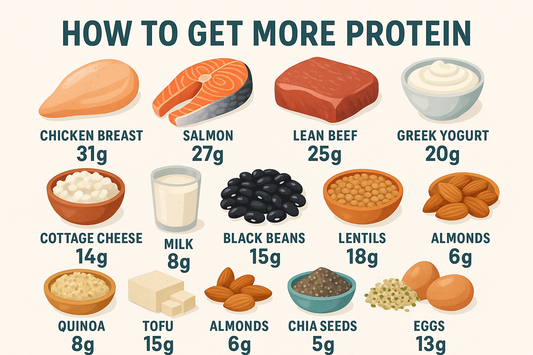The drive off the tee is golf's most visible display of power—the moment when players unleash maximum effort in an attempt to launch a small ball as far down the fairway as possible. When a professional golfer connects perfectly, the ball rockets off the clubface at speeds exceeding 170 mph, carrying 300+ yards through the air before bouncing and rolling even farther. But driving distance varies enormously across skill levels, and the numbers tell a story about athleticism, technique, equipment, and the often-misunderstood relationship between distance and scoring.
The Distance Spectrum: From Weekend Warriors to Tour Professionals
Casual and Recreational Golfers: Finding the Fairway
Weekend golfers and those who play occasionally for fun typically drive the ball 180–220 yards (165–200 meters). This range encompasses the vast majority of recreational players—those who play 5–20 rounds per year, may not practice regularly between rounds, and prioritize enjoyment over competitive scoring.
A 200-yard drive represents respectable distance for a casual player. It's enough to navigate most par-4 holes in two shots and reach some par-5s in three. However, the variation within this range reflects significant differences in athletic ability, swing efficiency, and equipment quality.
The lower end of this spectrum (170–190 yards) includes several groups: older golfers who've lost some swing speed, beginners still developing basic mechanics, players with significant swing flaws that reduce efficiency, and those using older or poorly fitted equipment. Many golfers in this range generate clubhead speeds of 75–85 mph—enough to get the ball airborne and moving forward, but well below optimal.
The upper end (210–230 yards) represents athletic recreational players with reasonable fundamentals who may have played other sports or maintain good general fitness. These players generate clubhead speeds of 90–95 mph and make reasonably solid contact most of the time, even if their swings contain technical inefficiencies that limit distance.
Gender differences are pronounced in driving distance, reflecting physiological differences in upper body strength, swing speed generation, and overall power production. Recreational male golfers average 195–220 yards, while recreational female golfers typically average 140–170 yards. These gaps narrow somewhat among more skilled players who optimize technique and equipment.
Skilled Amateur and Club-Level Golfers: Serious Distance
Regular golfers who play frequently, practice consistently, and have developed solid fundamentals typically drive the ball 230–270 yards (210–245 meters). This group includes single-digit handicap players, competitive club members, and serious enthusiasts who've invested time in lessons and deliberate practice.
A 250-yard drive opens up the golf course significantly. Par-4 holes under 400 yards become reachable with a mid-iron approach. Many par-5s become legitimate birdie opportunities with two solid shots. The player gains strategic options that shorter hitters don't possess.
Players in this category have usually addressed major swing flaws, generate clubhead speeds of 95–105 mph, and make consistent center-face contact. They understand swing mechanics well enough to self-correct, have equipment fitted to their specifications, and possess the strength and flexibility to create meaningful lag in the downswing.
The variation within this range often comes down to athletic differences and swing optimization. A fit 35-year-old with good rotational mobility might drive it 265 yards, while a 60-year-old with technical efficiency but reduced swing speed averages 235 yards. Both are skilled players, but physical capabilities create the gap.
High-level amateur competitors—college golfers, competitive state and regional players, and top club champions—push toward the upper end of this range or beyond, sometimes averaging 270–285 yards. These players generate clubhead speeds of 105–112 mph and possess near-professional swing efficiency.
College and Elite Amateur Players: Approaching Professional Distance
Division I college golfers and elite amateur competitors typically average 270–290 yards (245–265 meters) off the tee. This represents another substantial jump in performance, requiring exceptional swing speed, optimized technique, and usually years of dedicated practice and physical development.
At 280 yards, the golf course plays significantly shorter. Par-4s in the 400–440 yard range become drivable or reachable with short irons. Par-5s often require only a drive and a mid-iron. This distance advantage creates easier birdie opportunities and reduces the likelihood of making big numbers on long holes.
Top college players generate clubhead speeds of 110–118 mph—approaching professional levels. They've refined their swings through thousands of hours of practice, developed the specific strength and flexibility required for powerful golf swings, and use premium equipment optimized for their swing characteristics.
Women's college and elite amateur golfers typically average 220–245 yards, with top players reaching 250+ yards. This represents a smaller gap with male players than at recreational levels, reflecting better swing efficiency and more athletic players at elite amateur levels.
PGA Tour Professionals: Elite Distance
Professional golfers on the PGA Tour average 290–320 yards (265–290 meters) off the tee, with many of the longest hitters averaging well over 300 yards. These numbers represent the combination of near-perfect swing mechanics, exceptional athleticism, world-class equipment, and ideal playing conditions.
The PGA Tour average has increased steadily over decades. In 2024, the tour average driving distance was approximately 299 yards—a figure that would have been considered exceptional 30 years ago. This increase reflects improvements in equipment technology (particularly driver heads and golf balls), better physical conditioning among professionals, and swing technique optimization.
However, tour averages mask substantial variation among players:
Long-ball specialists regularly average 310–325 yards. Players like Rory McIlroy, Bryson DeChambeau, and Cameron Young routinely rank among the tour leaders in driving distance, with averages exceeding 320 yards and occasional drives reaching 350+ yards on firm fairways or downhill holes.
Average-distance tour players drive it 290–305 yards—still exceptional by any normal standard, but relatively moderate among professionals. These players compensate with superior accuracy, short game skills, or putting prowess.
Shorter-hitting tour professionals (a relative term) average 280–295 yards. Players like Corey Conners or Webb Simpson succeed despite below-average tour distance through exceptional ball-striking accuracy, elite short games, and strong mental games.
The distance leaders on tour generate clubhead speeds of 120–128 mph, with Bryson DeChambeau famously touching 130+ mph during his speed training phases. At these speeds, the golf ball leaves the clubface at over 180 mph—approaching the speed of a major league fastball.
LPGA Tour: Elite Women's Distance
Professional women on the LPGA Tour average approximately 250–270 yards (230–245 meters) off the tee, with long hitters reaching 280+ yards. This represents extraordinary distance for women's golf, achieved through optimal technique, excellent physical conditioning, and modern equipment.
The longest hitters on the LPGA Tour—players like Bianca Pagdanganan, Anne van Dam, and Lexi Thompson—average 270–280 yards, occasionally launching drives over 300 yards in ideal conditions. These players generate clubhead speeds of 105–112 mph, comparable to many recreational male golfers but with far superior swing efficiency.
The gap between PGA and LPGA Tour averages (roughly 40–50 yards) is smaller than the gap between recreational male and female players, reflecting the importance of technique optimization at elite levels. Professional women golfers squeeze every possible yard from their swing speeds through perfect contact, optimal launch conditions, and equipment maximization.
Long Drive Competitors: The Extreme End
Professional long drive competitors represent the absolute extreme of driving distance, though their sport differs significantly from traditional golf. These athletes routinely hit drives 350–400 yards (320–365 meters) in competition, with world record drives exceeding 475 yards.
Long drive competitors use specialized equipment (48-inch drivers versus the 45–46 inches typical in golf), swing at extreme speeds (often 140–150+ mph clubhead speed), and hit on extra-wide grids where accuracy matters less than distance. They're typically larger, stronger athletes who train specifically for maximum ball speed rather than the all-around game required in golf.
While fascinating, long drive numbers have limited relevance to actual golf—the swings often wouldn't be repeatable over 72 holes or accurate enough for fairways and greens.
What Determines Driving Distance?
Understanding the factors that influence driving distance reveals why some players bomb it while others struggle to reach 200 yards.
Clubhead speed is the single most important variable. The relationship between clubhead speed and distance is direct and powerful. Every 1 mph increase in clubhead speed typically translates to approximately 2.5–3 yards of additional distance, assuming solid contact and reasonable launch conditions.
A player swinging 90 mph might carry the ball 210 yards, while a player swinging 110 mph carries it 270 yards—a 60-yard difference from 20 mph of additional speed. This explains why physical speed development has become such a focus in modern golf instruction.
However, clubhead speed doesn't exist in isolation—it must be delivered efficiently:
Center-face contact matters enormously. A 100 mph swing hitting the center of the clubface produces significantly more ball speed (and thus distance) than a 105 mph swing catching the ball on the toe or heel. Off-center hits lose ball speed due to reduced energy transfer and twisting of the clubhead.
The "smash factor"—ball speed divided by clubhead speed—measures this efficiency. Optimal smash factor with a driver is approximately 1.48–1.50, meaning a 100 mph swing produces 148–150 mph ball speed. Poor contact might produce a smash factor of only 1.35–1.40, costing 10–15 mph of ball speed and 25–35 yards of distance.
Launch angle and spin rate create the optimal ball flight trajectory. Modern golf has identified ideal launch conditions for maximum distance: generally 10–15 degrees of launch angle and 2000–2800 rpm of backspin for most swing speeds.
Too low a launch angle (less than 8 degrees) means the ball doesn't stay airborne long enough, falling short of maximum distance. Too high (over 17 degrees) and the ball balloons, spending too much time rising and falling rather than traveling forward.
Similarly, too much spin (over 3500 rpm) creates excess lift and drag, causing the ball to balloon and lose distance. Too little spin (under 1800 rpm) and the ball falls out of the air prematurely without the aerodynamic lift to maximize carry.
Attack angle—whether the club is moving upward, level, or downward at impact—significantly affects both launch and spin. Modern distance optimization favors slightly upward attack angles (2–5 degrees up) with the driver, which increases launch angle while reducing spin rate. This creates the optimal "high launch, low spin" ball flight.
Many recreational golfers hit down on the driver (negative attack angle), creating low launch and high spin—the opposite of optimal. Simply changing to an upward strike can add 20–30 yards for many players without any increase in swing speed.
Equipment optimization has become increasingly sophisticated. Modern drivers feature adjustable weights, loft settings, and shaft options that allow customization for individual swing characteristics.
Driver loft affects launch angle. Slower swing speeds (under 90 mph) often benefit from higher lofts (11–13 degrees) to achieve adequate launch, while faster swing speeds (over 105 mph) can use lower lofts (9–10.5 degrees) and still achieve optimal launch through their speed and dynamic loft addition.
Shaft selection influences both feel and performance. Shaft flex (regular, stiff, extra stiff) should match swing speed—too flexible creates excessive twisting and inconsistent face angles, while too stiff prevents proper loading and release. Shaft weight, kick point, and torque all affect performance in subtle ways.
Golf ball selection matters more than many players realize. Modern golf balls are engineered with specific compression ratings and cover materials that perform differently for different swing speeds. A player swinging 85 mph gains nothing from a tour-level, low-compression ball designed for 110+ mph swings—they'd actually lose distance compared to a higher-compression ball matched to their speed.
Physical factors create the foundation for clubhead speed. Several components contribute:
Rotational power comes from the hips and torso, not just the arms. The golf swing is fundamentally a rotational athletic movement, similar to throwing a baseball or serving in tennis. Players with strong cores and mobile hips can generate more rotational speed, which translates to clubhead speed.
Flexibility and range of motion allow for fuller backswings and more complete coiling of the body. Limited shoulder turn, restricted hip rotation, or tight hamstrings all reduce the potential power storage and release in the golf swing.
Strength, particularly in the legs, core, and upper back, supports higher swing speeds. However, golf-specific strength differs from general strength—rotational power, explosive force production, and stability under dynamic movement all matter more than maximum lifting capacity.
Height and limb length provide natural advantages. Taller players with longer arms create larger swing arcs and greater potential clubhead speed through simple lever physics. This partly explains why many of the longest hitters on tour stand 6'0" or taller. However, technique optimization can allow shorter players to compete—Tony Finau (6'4") and Bryson DeChambeau (6'1") are long hitters partly due to height, but Rory McIlroy (5'9") achieves similar distances through exceptional swing speed and efficiency.
Technique and swing mechanics ultimately determine how effectively physical capabilities translate to clubhead speed:
Sequence and timing are critical. The golf swing requires a specific firing order: legs initiate, hips rotate, torso follows, shoulders turn, arms swing, and finally the club whips through. This kinetic chain, when timed properly, creates a multiplicative effect where each segment accelerates the next.
Poor sequencing—such as starting with the arms or rotating the hips too late—breaks the chain and reduces final clubhead speed dramatically. Many recreational players could add 10–15 mph simply by improving their swing sequence without any physical changes.
Lag and release refer to maintaining wrist angle deep into the downswing before releasing it explosively through impact. This "late hit" or "delayed release" stores energy and amplifies clubhead acceleration. Players who "cast" the club from the top—releasing the wrist angle too early—lose tremendous clubhead speed.
Weight shift and ground force utilization separates powerful swingers from arm swingers. Elite players push forcefully against the ground during the downswing, creating ground reaction forces that drive the body's rotation. Studies show that tour professionals generate forces exceeding their body weight pushing into the ground during the downswing—this force drives the rotation that creates speed.
The Distance Misconception: More Isn't Always Better
While driving distance receives enormous attention, the relationship between distance and scoring is more nuanced than "longer is better."
PGA Tour statistical analysis shows that driving distance correlates with scoring, but not as strongly as many assume. The correlation coefficient is approximately 0.25–0.3, meaning distance explains only about 6–9% of scoring variation on tour.
Compare this to strokes gained: approach (correlation around 0.65–0.7) and strokes gained: putting (0.50–0.55). Ball-striking accuracy and short game proficiency matter more for scoring than pure distance.
Accuracy vs. distance trade-offs exist for many players. Swinging maximally for distance often reduces accuracy and consistency. Tour statistics consistently show that fairway hit percentage matters significantly for scoring—players hitting 65% of fairways score better than those hitting 50%, even if the longer hitters average 10–15 yards more distance.
This is why some tour players deliberately swing at 85–90% maximum to find more fairways, accepting slightly shorter drives in exchange for better angles and lies.
Course management often favors strategic positioning over maximum distance. On many holes, an extra 20 yards of distance provides little advantage if it brings hazards into play or creates awkward approach angles. The best players optimize for position, not just distance.
Recreational player perspective: For higher handicap golfers, the distance obsession can be counterproductive. A player who drives it 210 yards straight will almost always score better than one who averages 240 yards but scatters drives into trouble 40% of the time.
That said, distance does create advantages: shorter approach shots are easier to control, par-5s become reachable, and recovery from mistakes is simpler when you're farther down the hole. The key is finding your personal balance between distance and control.
How to Increase Driving Distance
For golfers looking to add yards to their drives, several approaches have proven effective:
Speed training has become mainstream in golf, with programs specifically designed to increase swing speed. These typically involve overspeed training (swinging very light clubs or training aids faster than normal), regular speed work (normal clubs), and occasionally resistance training (heavier implements).
Research shows that dedicated speed training can add 5–8% to clubhead speed—potentially 10–20 yards—over 6–12 weeks of consistent work. Professional long driver Kyle Berkshire and others have popularized these approaches, making them accessible to recreational golfers.
Swing technique optimization often provides quicker gains than physical training. Working with a qualified instructor on:
- Improving swing sequence and kinetic chain
- Creating more lag and delayed release
- Optimizing attack angle (hitting up on the ball)
- Enhancing rotation and weight shift
Many golfers add 15–25 yards simply by making technical improvements that allow them to use their existing physical capabilities more efficiently.
Equipment fitting ensures you're not leaving distance on the table through poorly matched gear. Professional club fitting addresses:
- Optimal driver loft for your swing speed and attack angle
- Proper shaft flex and weight
- Correct shaft length (longer isn't always better—control matters)
- Ball selection matched to swing speed
A proper fitting often gains 10–20 yards compared to off-the-rack equipment that doesn't match your swing.
Physical conditioning builds the foundation for sustainable speed:
- Rotational power exercises (medicine ball throws, cable rotations)
- Mobility work (especially hips, thoracic spine, shoulders)
- Lower body strength (squats, deadlifts, lunges)
- Core stability training
- Explosive power development (plyometrics, Olympic lifts)
Golf-specific fitness can add 5–15 mph of clubhead speed over months of consistent training, particularly for players with limited athletic backgrounds.
Flexibility and range of motion improvements allow fuller turns and better positions. Many golfers, particularly those over 40, gain significant distance simply by improving shoulder turn, hip mobility, and spinal rotation—allowing them to create more coil in the backswing.
Age and Driving Distance
Distance naturally declines with age, though the rate varies dramatically based on activity level and physical maintenance:
20s-30s: Peak driving distance for most players. Physical capabilities are at or near maximum, and many players have developed solid technique.
40s: Modest declines begin for most players—typically 5–10 yards per decade without active maintenance. Players who maintain fitness and flexibility often lose minimal distance.
50s: Distance loss accelerates somewhat, with 10–15 yard decreases common. However, fit, active golfers in their 50s often drive it farther than sedentary golfers in their 30s.
60s and beyond: Continued decline, though wide variation exists. Some senior golfers maintain 220+ yard drives through excellent technique and sustained fitness, while others drop to 160–180 yards.
Champions Tour (senior PGA Tour for players 50+) professionals average around 270–280 yards—remarkable distance for the age group, demonstrating that proper maintenance and technique can preserve distance well into later years.
The Bottom Line
Driving distance in golf spans an enormous range from recreational players averaging 190 yards to tour professionals averaging 300+ yards. A "typical" distance depends entirely on skill level, age, gender, and athletic ability.
Casual golfers driving it 200 yards can enjoy golf fully and score well for their level. Skilled amateurs averaging 250 yards have legitimate competitive capability. Tour professionals at 300+ yards showcase the absolute peak of golf's distance capability combined with the accuracy and control to use it effectively.
But here's the critical insight: driving distance, while flashy and measurable, represents just one component of golf scoring. Accuracy, consistency, short game proficiency, and putting all matter as much or more. The best golfers optimize their distance within the context of their overall game—enough to create reasonable scoring opportunities, but not so much that they sacrifice accuracy and control.
For most golfers, the goal shouldn't be maximum distance at any cost, but rather optimal distance—the longest drives you can hit while maintaining acceptable accuracy and consistency. That balance, combined with improved skills in all areas of the game, leads to better scoring and more enjoyment than pure distance ever could alone.
















